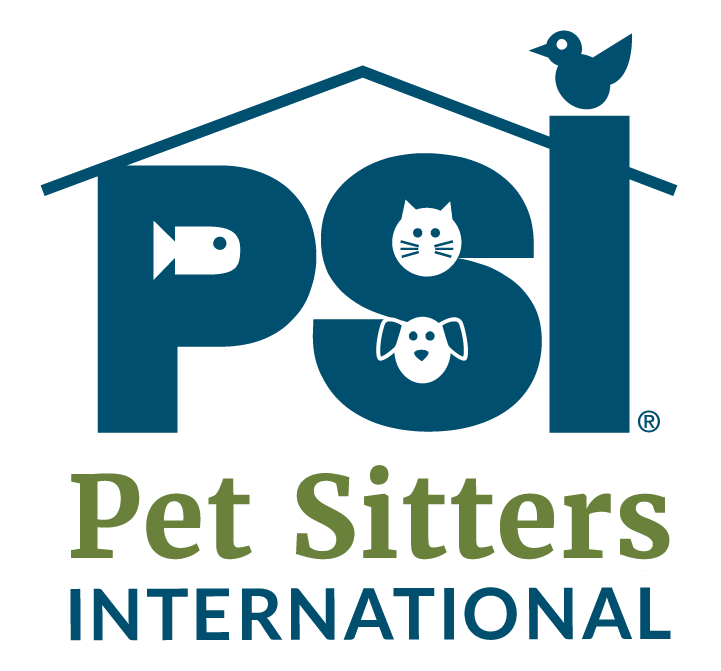7 Tips for Managing Pet-Care Business Team Members with ADHD
August 2025 | Beth Stultz-Hairston, Pet Sitters International
PLEASE NOTE: This article is a follow up to PSI's recent blog post, Navigating ADHD as a Pet Sitter or Dog Walker. We encourage you to read that post first.
Disclaimer: This blog post covers ADHD and managing team mebers with ADHD— topics we feel are important in our industry. You’ll also see tips regarding navigating ADHD challenges in this post. However, nothing in this post constitutes a diagnosis, medical advice, or legal advice. We encourage you to consult with medical and mental-health professionals for questions regarding ADHD and/or to establish your personalized care plan; and to consult with legal counsel if you have any questiosn about legalities or accommodations related to ADHD.

Even if you do not have ADHD, as you grow your team you may find that you will be managing staff with ADHD—and you may be wondering how you can best support them while also ensuring they are a good fit for your business and asset to your team. (Don't forget to check out this post if you are a pet-care business owner with ADHD!)
A couple of things to know:
Yes, the American Disabilities Act (ADA) does cover individuals with ADHD.
No, you cannot ask an applicant or employee if they have ADHD (no questions about their medical or psychiatric history). The only exception is if the applicant or team member asks for reasonable accommodations.
This article in ADDitude magazine provides more information on ADA and ADHD accommodations in the workplace. We encourage any business owner with concerns about their legal obligations regarding team members with ADHD (or any legal obligations) to seek legal counsel.
Legalities aside, what are practical ways you can best manage and support team members who struggle with the ADHD traits we discussed in our previous blog post on navigating ADHD in the pet-care industry.
As a manager, keep these 7 best practices in mind:
- Ask all team members how they best learn and retain information. This tip is important even if no one on your team has ADHD, so make this question a part of your interview and/or onboarding process. (Remember, though, you shouldn’t ask any questions about their medical history.) You’ll find that some prefer written instructions, while others do better with instructions delivered face to face.
- Provide instructions and learning opportunities in various formats. Based on the information you receive from team members to the question above, you’ll likely find that a multi-faceted approach (both in the initial onboarding process and continuing education) will be best for your team—and your business. While it’s important to have thorough SOPs that can be shared with your team, think about other formats you can use.
For example: In addition to going on practice visits with new team members and providing detailed written instructions for what’s included in a pet-sitting visit, can you also record yourself on a pet-sitting visit so that your team members have something to refer back to later?
Or you may record specific best practices, such as how you guard a door when you first enter to prevent door dashers, or tricks you’ve found for luring a stubborn pup back to their crate at the end of visits.
Also make sure demos are available for any software or digital programs you use. If the software platform doesn’t provide tutorials, create your own to make available to your team. - Create schedules that work for your business and your team members. Working for a pet-sitting business requires flexibility, but thoughtful scheduling by you can make the job much easier for your team, especially those who may struggle with time management or organizational issues.
For example, if a team member struggles waking up/during morning hours, can you arrange your schedule to have that team member focus on afternoon and evening visits? Can you arrange schedules so that team members typically are scheduled for the same time blocks and have the same day(s) off each week to help prevent confusion?
Also make sure you allow enough time between visits in your schedule. This can help team members who may need a little more time to transition between visits, but this is also a good safety practice. Forcing your staff to rush between visits can result in unintended consequences like forgetting to lock a client’s door or getting in an automobile accident. - Set your team up for success. As a business owner, it’s easy to get frustrated at a team member who forgets an important step at a visit or forgets to mark a visit as completed in your scheduling software. Of course, if you use staff for any length of time you will find that some employees simply aren’t a good fit or have subpar work habits—but that isn’t always the case.
As a manager you must ask yourself: Am I setting my team up for the best outcomes? This includes an honest evaluation of your training and management practices to make sure employee responsibilities and goals are made clear, your onboarding process is effective, team members have an easy way to access ongoing support, and your SOPs are clearly shared with your team (and in different formats as mentioned)…and don’t only make sense to you because you’ve been pet sitting for years.
Depending on issues you have with team members or concerns they share with you, consider simple changes you can implement. If some team members have missed tasks during visits, provide a checklist of all pet-sitting visit tasks for team members to check off (either in print or through your software or an online program).
If you have concerns about team members either being late or forgetting visits or certain tasks, use your scheduling software or another program to send reminders (about their scheduled visits or other tasks such as adding visit updates).
If you see gaps in the skills you expect of your team, evaluate your onboarding and training process. You may need to add more training time or incorporate more assessments (e.g., quizzes, demos, etc.) for team members to demonstrate understanding and proficiency. - Give feedback and address concerns thoughtfully. This is especially important if you have team members who struggle with perceived conflict or Rejection Sensitive Dysphoria, but let’s be honest, no one loves negative feedback and employee evaluations aren’t really fun for anyone. As a manager, effectively providing feedback is a skill you must have or develop.
Sharing how you provide feedback should be included in your onboarding process so team members know what to expect. Then, even if you schedule regular employee reviews or evaluations, negative feedback should never come as a surprise. Don’t save concerns for formal evaluations; work with your team to address any concerns in real time.
When you do have to provide less than positive feedback, be mindful of your delivery. Even when addressing subpar work performance, avoid blaming and instead work with your team member to identify the issue and work on solutions together. If you sense that a team member is overwhelmed during the conversation, give them a short break before revisiting the conversation. - Educate yourself. You’ll notice that the best practices we’ve shared in this section would be beneficial to all team members, and not just those with ADHD. However, as a business owner and manager, you are responsible for educating yourself on laws, accommodations and best practices when employing neurodivergent team members. While you can’t ask a team member about their diagnosis (unless they disclose to ask for accommodations), know and be aware of symptoms that may result from ADHD so you can recognize them and have a plan to help address them.
Should a team member come to you to disclose they have ADHD and ask for accommodations, commend them for being brave enough to share (there’s still a lot of stigma attached to neurodivergence!) and work collaboratively with them to find solutions that can help them and work for your business. Also be aware of the ADHD superpowers we discussed in this blog post and play to your team members’ strengths. If you have team members (with ADHD or not) that are high energy or excel in creativity and out-of-the-box thinking, those are skills you can support and ones that make team members valuable contributors to your business. Give them opportunities to share marketing ideas or participate in community outreach. You’ll find that even when you only employ staff for pet-sitting visits or dog walks, their skill sets and ideas can contribute to other areas of your company. - Focus on your team’s wellbeing. Remember how we talked about the importance of focusing on your mental and physical health earlier? The same is true for your team, and as a manager, you have an ethical responsibility to prioritize your team’s wellbeing. Address topics like burnout, compassion fatigue and physical safety in their initial onboarding and regularly address these topics with your team.
Remember that neurodivergent team members may be even more susceptible to burnout, and be on the lookout for signs of burnout or compassion fatigue in all team members. Actively talking about the stressors that come with working in pet care and providing your team with information, assessments and tools to help with burnout is a great first step in creating an environment where team members feel comfortable sharing their struggles and concerns.
Neurodivergent individuals, including those with ADHD, can thrive in the pet-care industry, and as a business owner you have a responsibility to ensure that members of your team are given the tools and support they need for success. While the best practices described above may help you better support, train and manage team members with ADHD, the strategies shared will also help you better manage your entire team. Commit to becoming a manager that compassionately and effectively leads and to creating a company that clearly cares about their team's well-being and professional growth. Your staff will notice, and you'll see an increase in their performance and job satisfaction. It's a win-win!







Comments
No comments.